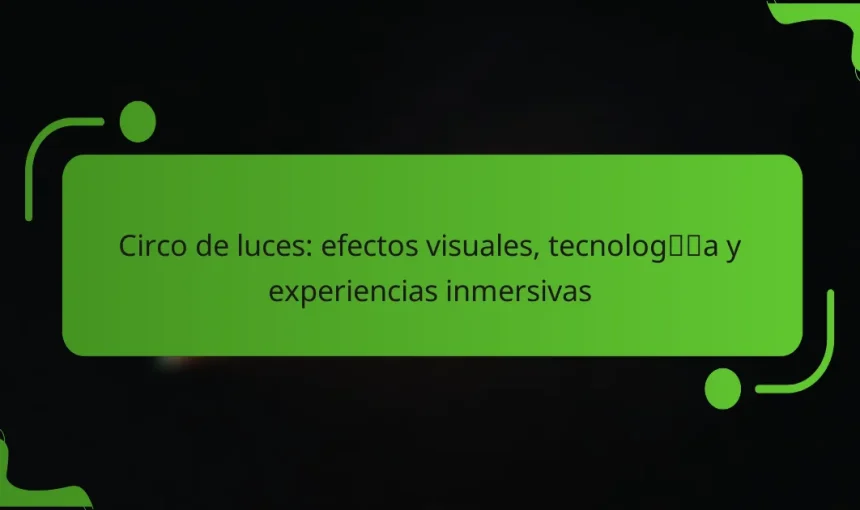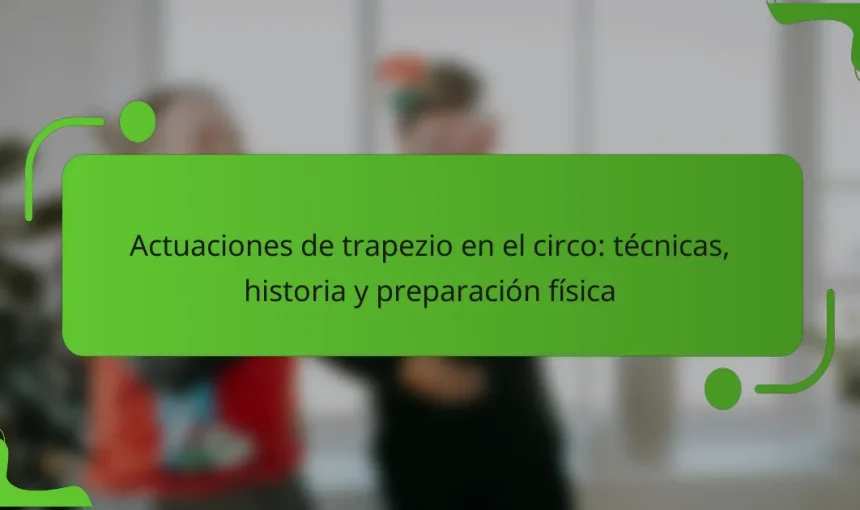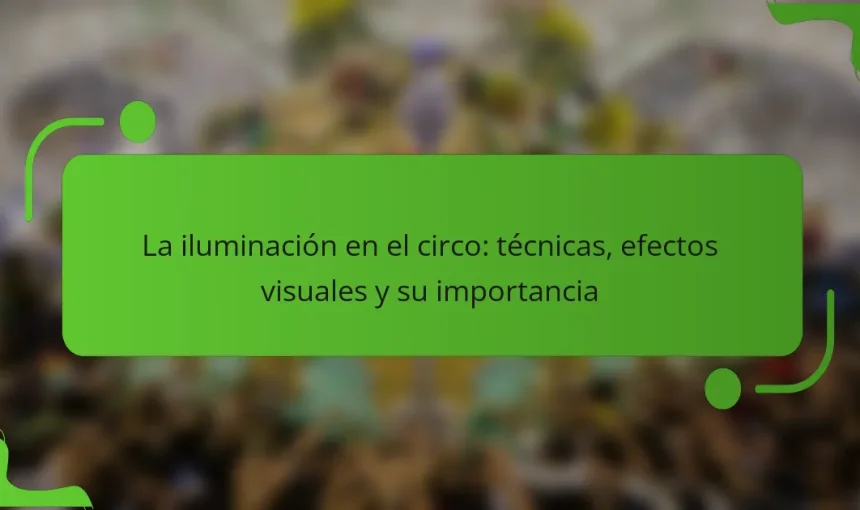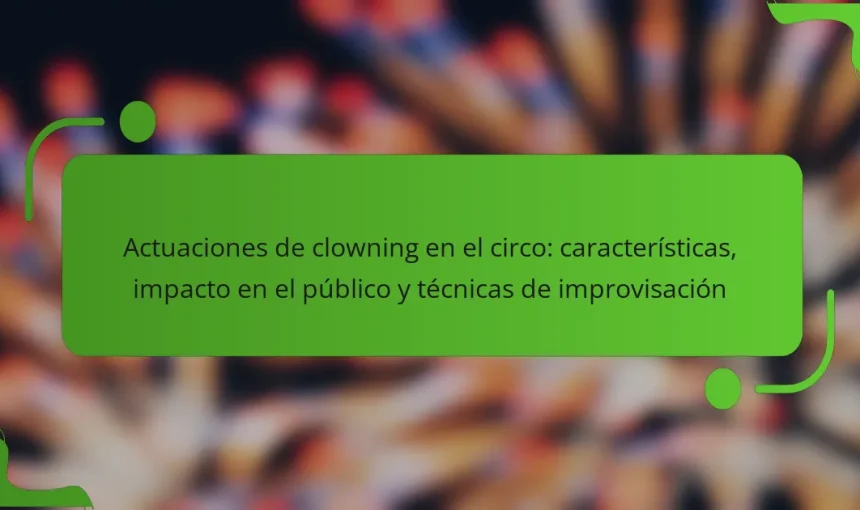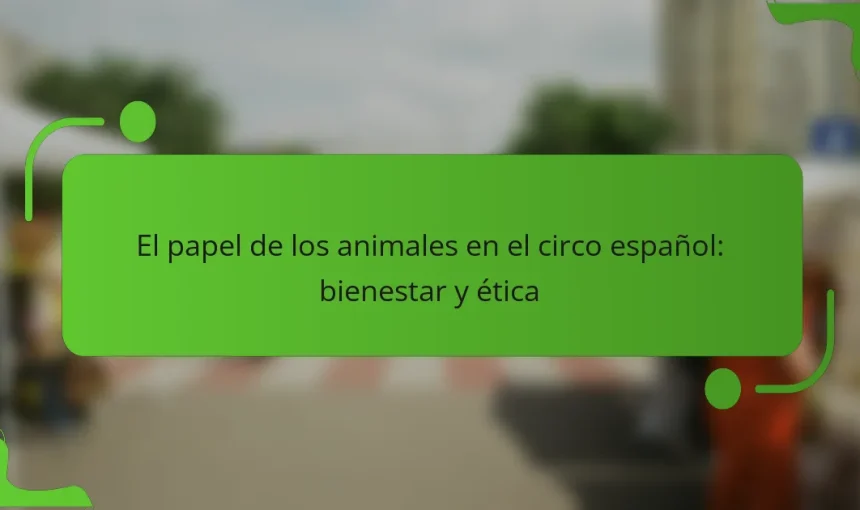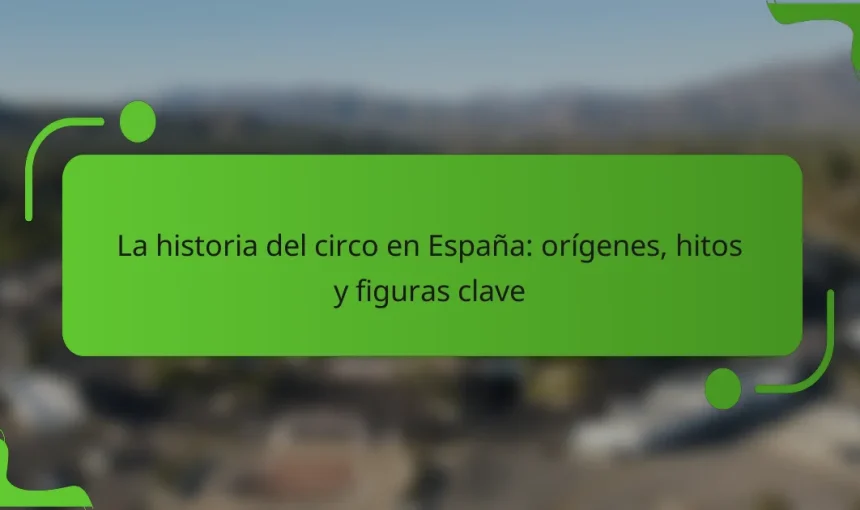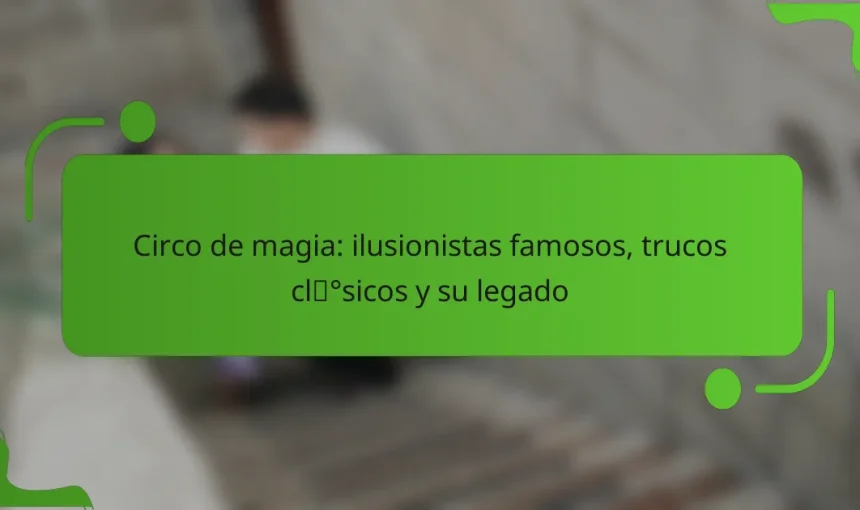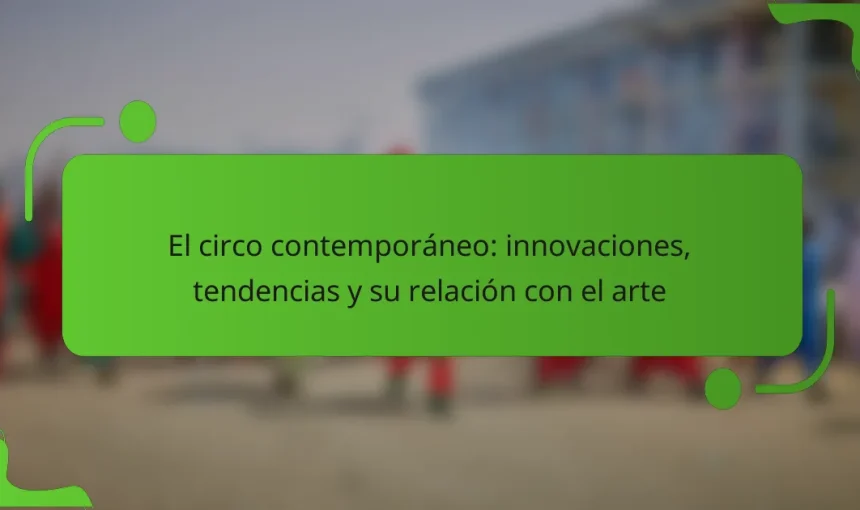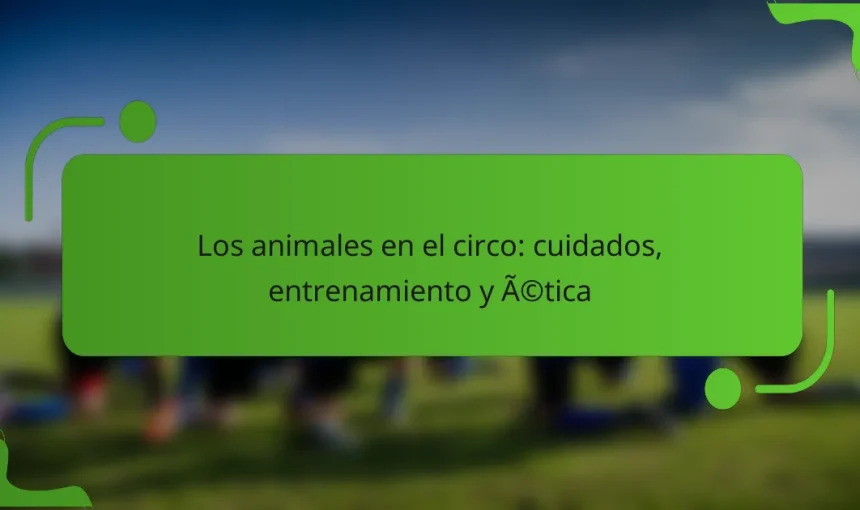Circo de luces is a performance that merges circus arts with impressive visual effects, utilizing advanced technology to create an immersive experience. Central to this spectacle is the role of light in visual storytelling, enhancing acrobatics and magic acts through luminous projections. The article explores the significant impact of these visual experiences on audiences, fostering […]
Trapeze performances in the circus are acrobatic displays executed on a suspended bar, featuring artists known as trapeze artists who perform jumps, spins, and aerial figures. The article covers the techniques involved in trapeze acts, distinguishing between fixed and flying trapeze, and emphasizes the physical preparation required, including strength, flexibility, and endurance training. Additionally, it […]
The article focuses on circus lighting, which is the strategic use of lights to enhance performances and create specific atmospheres. It discusses the crucial role of lighting in directing audience attention, defining the ambiance of acts, and improving visibility for acrobatics and costumes. The article also addresses the challenges of creating impactful visual effects that […]
¿Qué son las actuaciones de clowning en el circo? Las actuaciones de clowning en el circo son presentaciones cómicas realizadas por payasos. Estas actuaciones combinan humor físico, improvisación y habilidades de actuación. Los payasos utilizan disfraces coloridos y maquillaje distintivo para atraer la atención del público. A menudo, interactúan con la audiencia para crear una […]
¿Cuál es el papel de los animales en el circo español? Los animales en el circo español desempeñan un papel central en las actuaciones. Estos animales son utilizados para entretener al público a través de trucos y exhibiciones. La presencia de animales como leones, tigres y elefantes es común en los circos tradicionales. Sin embargo, […]
¿Cuál es la historia del circo en España? El circo en España tiene una historia rica y diversa. Sus orígenes se remontan al siglo XVIII. Durante este periodo, se establecieron las primeras compañías de circo en el país. Estas compañías ofrecían espectáculos de acrobacias, malabares y actos de animales. En el siglo XIX, el circo […]
The article focuses on the magic circus, a performance that integrates acrobatics and illusionist acts designed to captivate audiences of all ages. It explores the historical evolution of the magic circus since the 18th century, highlighting the contributions of famous illusionists to its popularity and cultural impact. Key elements discussed include classic tricks such as […]
Contemporary circus is an artistic performance form that merges circus skills with theatrical elements, emphasizing narrative and artistic expression. Unlike traditional circus, contemporary circus incorporates dance, music, and multimedia, allowing artists to convey stories through their performances. This evolution, which began in the late 20th century, includes innovative companies like Cirque du Soleil, showcasing a […]
¿Qué son los animales en el circo? Los animales en el circo son seres vivos que son entrenados para realizar actos y espectáculos. Estos animales pueden incluir leones, tigres, elefantes, caballos y aves, entre otros. Se utilizan en presentaciones para entretener al público. Históricamente, los circos han incluido animales como parte de su atractivo. Sin […]
¿Cuál es el papel de los animales en el circo español? Los animales en el circo español desempeñan un papel central en las actuaciones. Estos animales son utilizados para entretener al público a través de trucos y exhibiciones. La presencia de animales como leones, tigres y elefantes es común en los circos tradicionales. Sin embargo, […]
